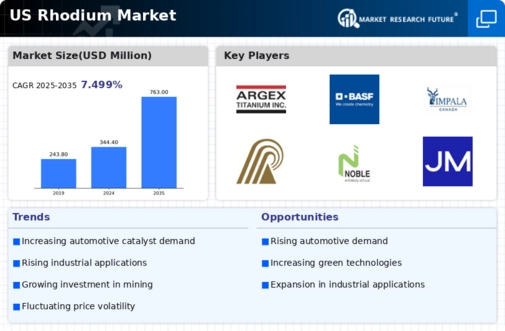The US Rhodium Market has shown significant fluctuations in demand and pricing dynamics driven by its critical application in automotive catalytic converters and other industrial uses. Competitively, various players have established their positions within this niche market. Market trends reveal increased interest in rhodium due to stricter emissions regulations, driving up demand and creating a unique trading environment. The landscape is characterized by a mix of established firms and emerging entities, making it essential for companies to understand their competitive advantages, innovate their offerings, and navigate supply chain challenges effectively.
As sustainability becomes a focal point for industries globally, the US Rhodium Market presents a unique interplay of opportunities and challenges for all market participants. Syndicate Plus has established itself as a formidable player in the US Rhodium Market by leveraging its extensive network and deep market insights. The company's strengths lie in its refined supply chain management and its capability to provide high-quality rhodium sourced responsibly. Its market presence is amplified by strong relationships with suppliers and customers, ensuring a smooth flow of materials while adhering to regulatory standards.
Syndicate Plus focuses on innovation and sustainability, which sets it apart from competitors, allowing it to cater to the increasing demand for eco-friendly solutions in industrial applications. Furthermore, the company's ability to adapt to market fluctuations and their strategic approach towards pricing have contributed to its robust position in this competitive landscape. Newmont Corporation has made its mark in the US Rhodium Market through its commitment to responsible mining and production processes. The company is renowned for its key products and services that include not just rhodium but also a range of precious metals used across various industries.
With a strong market presence bolstered by advanced technology, Newmont Corporation is equipped to ensure efficiency and sustainability within its operations. Among its strengths are its extensive resource base, operational excellence, and a significant portfolio of projects in development, which ensure long-term viability. Moreover, Newmont has engaged in strategic mergers and acquisitions that have reinforced its market position and expanded its operational capabilities. This proactive strategy allows Newmont to remain competitive in the evolving landscape of the US Rhodium Market while meeting the increasing demands driven by regulatory changes and market needs.

















